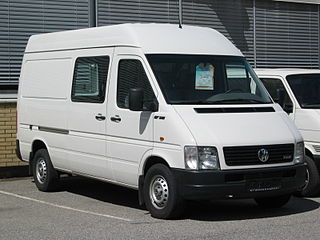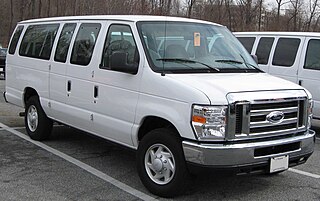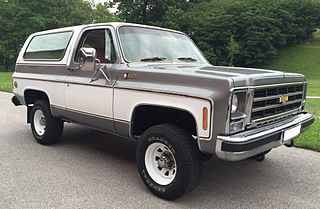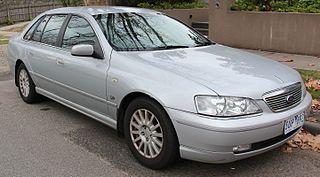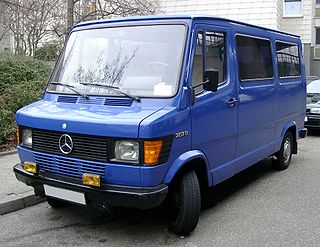This article needs additional citations for verification .(July 2015) (Learn how and when to remove this template message) |
The Ford A-series is a truck that was built by Ford UK to bridge the gap between the relatively small Transit of 3.5 metric tonnes GVW and the bigger 7-tonne D-series.
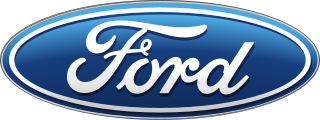
Ford of Britain is a British wholly owned subsidiary of Blue Oval Holdings, itself a subsidiary of Ford International Capital LLC, which is a subsidiary of Ford Motor Company. Its business started in 1909 and has its registered office in Brentwood, Essex. It adopted the name of Ford of Britain in 1960.

The Ford Transit is a range of light commercial vehicles produced by Ford since 1965. Sold primarily as a cargo van, the Transit is also built as a passenger van, minibus, cutaway van chassis, and as a pickup truck. Over 8,000,000 Transit vans have been sold, making it the third best-selling van of all time and have been produced across four basic platform generations, with various "facelift" versions of each.
| Ford A-Series | |
|---|---|
| Overview | |
| Manufacturer | Ford UK |
| Production | 1973–1983 |
| Body and chassis | |
| Class | Light commercial vehicle (M) |
In 1967, Ford made the decision to carry out a thorough investigation of the sector of 3.5 to 7 ton GVW trucks. The decision to introduce the range was made in 1970 and development began in early 1971. Public debut for the A-series was at the Frankfurt Motor Show 1973. Some 20 vehicles running over 500 000 miles were used during the three-year, 12 million-pound proving and development programme.
Commercially first introduced on September 13, 1973. Over 350 basic variants built allowing for wheelbase, gross weight, engine and body types, and also LHD and RHD. Even an articulated tractor or "baby" artic, the AA0709 with a GCW of 6600 kg was added to the range but only sold in the UK. The "A" cab shared most components with the Transit and the most notable differences are the longer and wider wings, longer hood and a different grille. Unlike the Transit that had a face lift in 1977/1978 the "A" retained its profile for the entire period of production.
The A-series could be divided into two categories:
- The smaller A04xx with 14-inch wheels, 6x170 mm bolt pattern, and four-cylinder engines.
- The bigger A05xx / A06xx with 16-inch wheels, 6×205 mm bolt pattern, stronger frame and six-cylinder engines.
Four different engines were offered: a 2.4l 4-cylinder diesel. A 3.54l 6-cylinder diesel, actually a 2.4 with 2 more cylinders, a 2l V4 petrol and a 3l V6 petrol. Three transmissions were offered: Ford 4-speed 4-310 synchro only on 2-3-4, Turner 4 spd T4-150 1-2-3-4 synchro, and the ZF 5 spd S5-24/3 1-2-3-4-5 synchro offered as a high capacity unit. 3 driving axles were offered: The versions with 14-inch wheels had a slightly modified 50 series axle (Ford type 24) similar to the Transit. Ratios 4.625 and 5.125 Single 16 in wheel models had a Salisbury Engineering 8HA/Dana 60 (Ford type 27). Ratios 4.88 to 6.17. Dual 16 in wheel models had a Salisbury Engineering 10HA/Dana 70HD (Ford type 42). Ratios 4.88 to 7.17. Four wheelbases were offered: 120, 130, 145 and 156 inches (3.05, 3.3, 3.68 and 3.96 m).
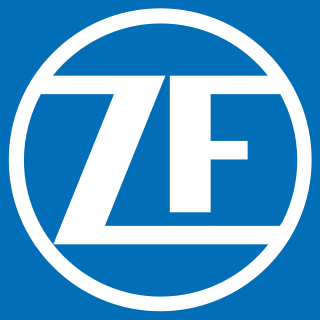
ZF Friedrichshafen AG, also known as ZF Group, originally Zahnradfabrik Friedrichshafen, and commonly abbreviated to ZF, is a German car parts maker headquartered in Friedrichshafen, in the south-west German region of Baden-Württemberg.

The Dana/Spicer Model 60 is an automotive axle manufactured by Dana Holding Corporation and used in OEM pickup and limited passenger car applications by Chevrolet, Dodge, Chrysler, Jeep, Ford and Land Rover. There are front and rear versions of the Dana 60. It can be readily identified by its straight axle tubes, 10 bolt asymmetrical cover, and a "60" cast in to the housing. Gross axle weight ratings are often lowered by the vehicle manufacturer for safety and tire reasons. They are also lowered to reduce loads on other powertrain components such as transmissions and transfer cases. Dana 60 Axles are also increasingly swapped into many custom offroad applications to accommodate larger tires and deep compound gearing with locking differentials.
The Dana/Spicer Model 70 is an automotive axle manufactured by Dana Holding Corporation and has been used in OEM heavy duty applications by Chevrolet, Dodge, and Ford. It can be identified by its straight axle tubes, 10 bolt asymmetrical cover, and a "70" cast in to the housing and is visually similar to the Dana 60. The majority of the Dana 70s are rear axles, however Dana 70 front axles do exist. Both front and rear axle variations were first offered in 1957. The Dana 70 is generally regarded to have more strength than a Dana 60 but not as much as a Dana 80. Gross axle weight ratings are often lowered by the vehicle manufacturer for safety and tire reasons.
